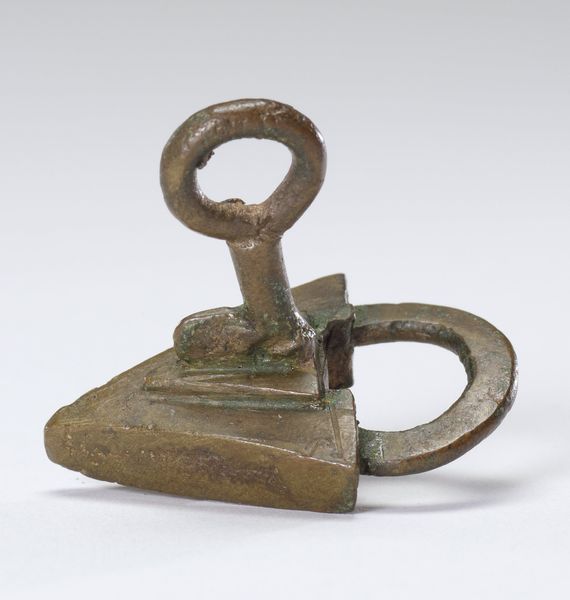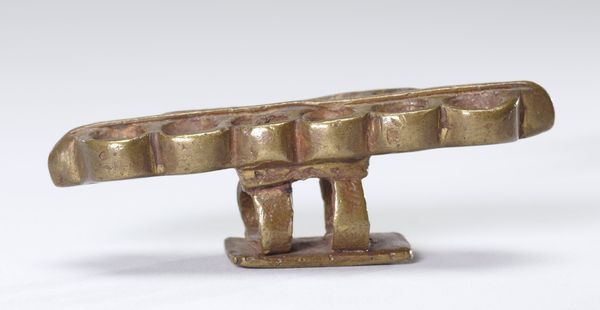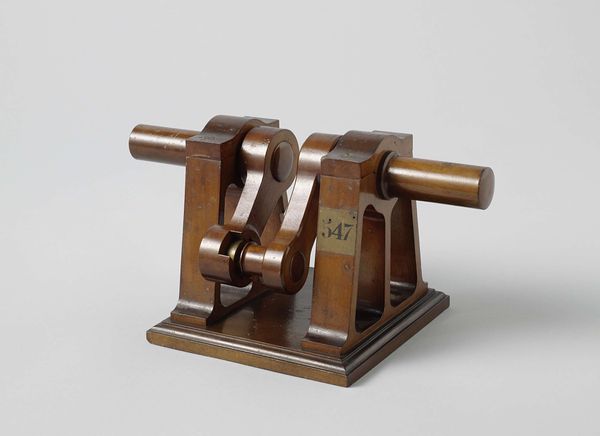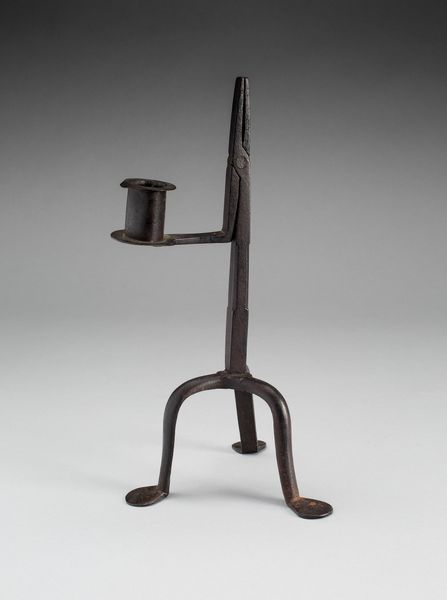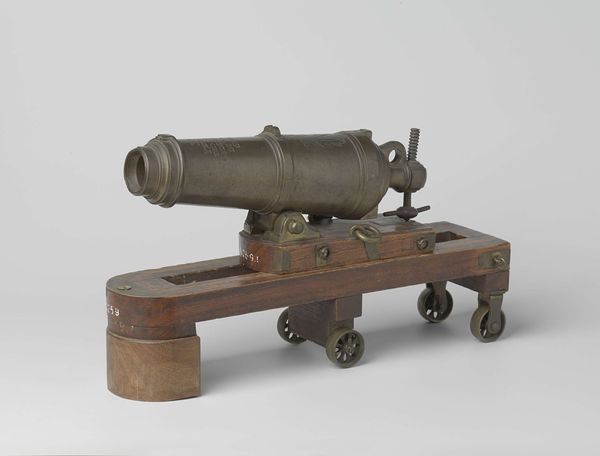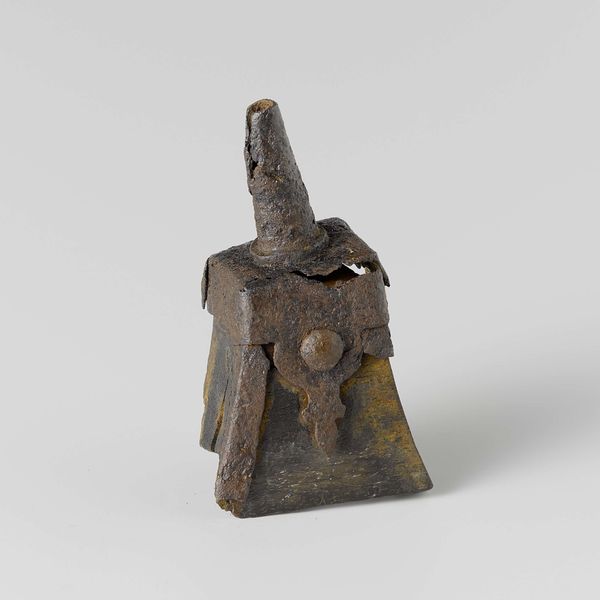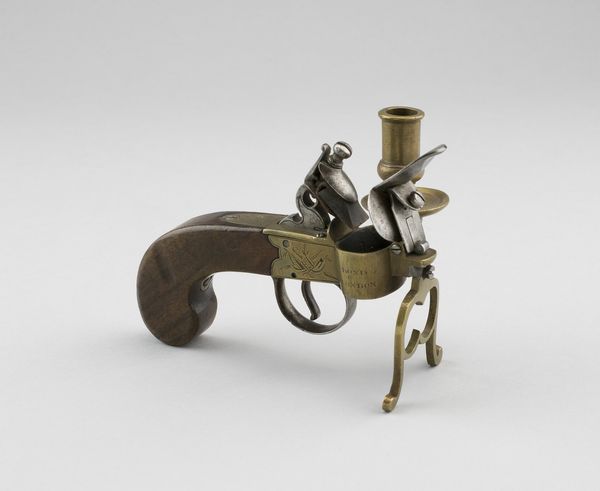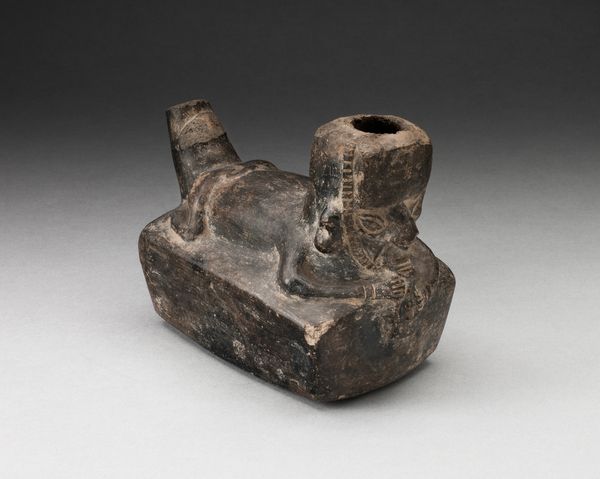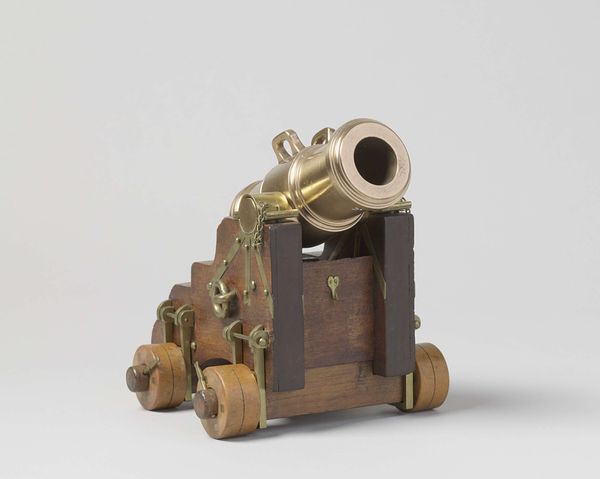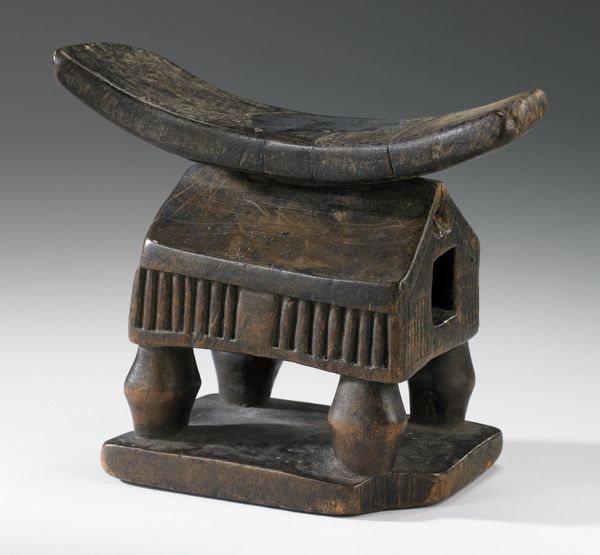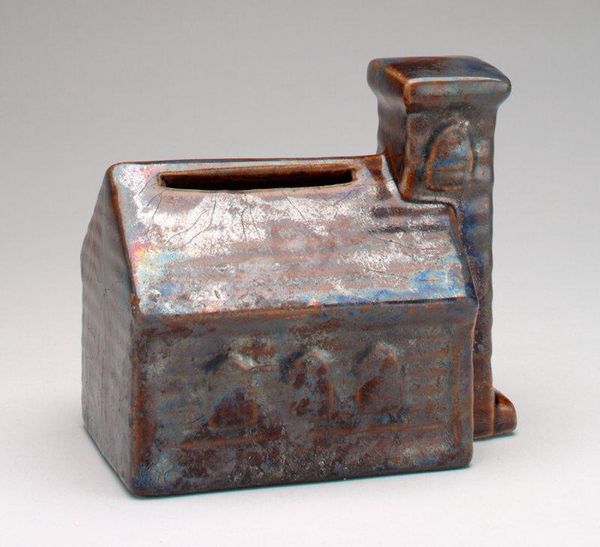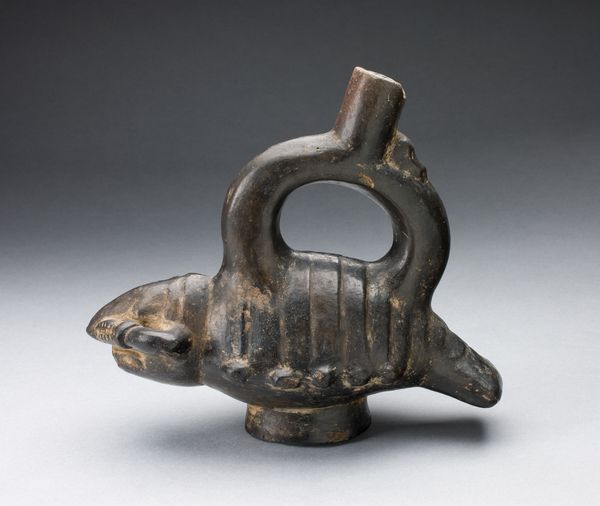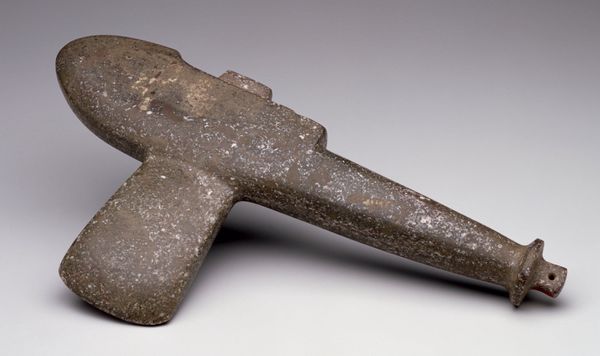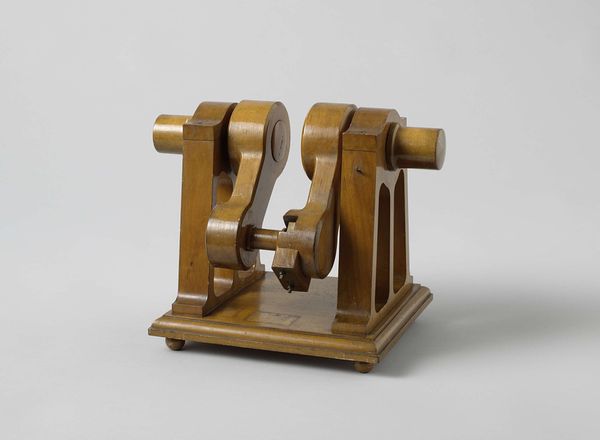![Goldweight [Cannon] by Akan](/_next/image?url=https%3A%2F%2Fd2w8kbdekdi1gv.cloudfront.net%2FeyJidWNrZXQiOiAiYXJ0ZXJhLWltYWdlcy1idWNrZXQiLCAia2V5IjogImFydHdvcmtzL2M0MDc4MjI4LTlmMjQtNGYxMC04NTk3LTAyMzFlYjFkNGE5Ny9jNDA3ODIyOC05ZjI0LTRmMTAtODU5Ny0wMjMxZWIxZDRhOTdfZnVsbC5qcGciLCAiZWRpdHMiOiB7InJlc2l6ZSI6IHsid2lkdGgiOiAxOTIwLCAiaGVpZ2h0IjogMTkyMCwgImZpdCI6ICJpbnNpZGUifX19&w=3840&q=75)
brass, carving, metal, sculpture
#
african-art
#
brass
#
carving
#
metal
#
sculpture
#
figuration
#
sculpture
Dimensions: 1 1/4 x 7/8 x 1 3/4 in. (3.18 x 2.22 x 4.45 cm)
Copyright: Public Domain
Curator: The Minneapolis Institute of Art holds this intriguing piece, an Akan goldweight from the 19th or 20th century. It depicts a cannon, and it’s cast in brass. Editor: Immediately, I’m struck by its small scale and the material's density. There's a tangible weight implied by the color and the clear casting of its forms. It feels surprisingly weighty for its size. Curator: Exactly. These goldweights, though small, served a vital role. They weren't just decorative; they were part of a sophisticated system of measurement, reflecting principles of equity in trade. The cannon here represents power, of course. But consider also how trade itself became a battleground of sorts with competing interests. Editor: The cannon’s cylindrical form, segmented by those bands, presents a satisfying repetition. It emphasizes function but abstracts the form, turning what is essentially a violent weapon into an element of visual order. The legs appear stylized as well, creating repetition, and an upward motion, suggesting stability. Curator: The object has symbolic weight as much as it possesses actual weight, referring to cultural values. As such, it encapsulates aspects of societal tension regarding conflict and peace. And cannons were not exactly unknown to the Akan peoples, and were frequently featured, especially during colonial expansion. Editor: Interesting! To consider that object with a purely Western perspective would miss the subtle contextual cues of this visual vocabulary, rooted in economic transactions. If we zoom in further, we can also analyze how it adheres to the visual principles to its artistic era: simplicity and balance. Curator: That's the beauty of these objects – they connect economic reality with a deeper moral framework. These weights, despite their size, silently negotiate principles and remind the community about ideals regarding power and wealth. Editor: The material speaks to that moral quality you mentioned, as well. Gold itself carries inherent value; brass being a visual echo may suggest something about the relationship between authentic power and its symbolic stand-in. Curator: Yes, it creates layers of significance. These goldweights weren’t mere tools; they became embedded in the daily rituals of social negotiation. Editor: Looking at the structure and materiality, what began as simple representation is now full of nuance. Thanks for pulling back the layers with me. Curator: Indeed, these goldweights show a blend of culture and the enduring power of objects as social touchstones.
Comments
No comments
Be the first to comment and join the conversation on the ultimate creative platform.
